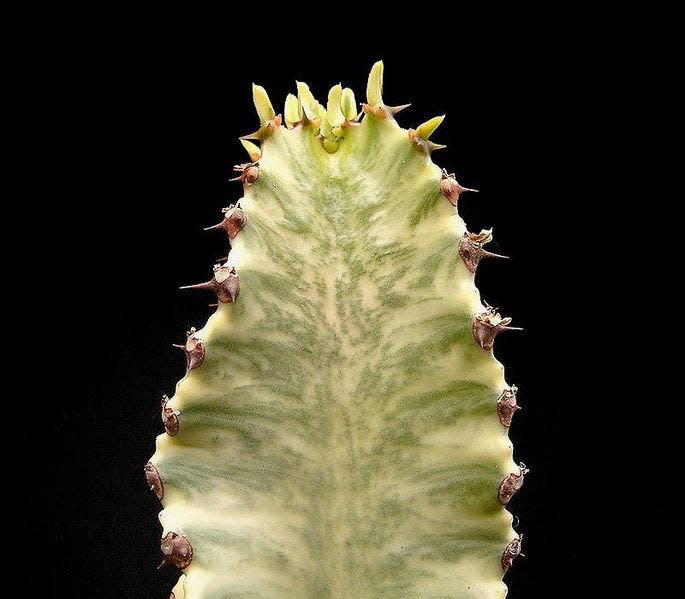Slender houseplants work well with decor
In their quest for light, most plants grow both upward and outward. Indoors, where space is often limited, many traditional houseplants — including rubber tree, Benjamin fig and parlor palm — grow quite wide, requiring frequent pruning. Awkward shapes can result, so homeowners sometimes avoid these plants entirely. That’s why plants with upright growth habits are especially valuable for interiorscaping. Such plants demand little floor space and require no pruning — or just an occasional snip here or there.
Among suitable large-growing houseplants is false aralia, an old favorite from New Caledonia that features slender, upright growth and minimal branching. Its dark-green or black leaves, which resemble marijuana foliage, are deeply cut and airy, with an exotic appearance. The species (Schefflera elegantissima) has a slow-to-moderate growth rate and needs bright, indirect light.
A plant that’s gaining traction for interiorscaping is podocarpus (P. macrophyllus), a Japanese tree that’s been used in our landscapes for over a century. Podocarpus, which can grow 50 feet tall in the landscape, succeeds in bright or indirect light. Indoors, occasional light shaping is required.

If you visit plant nurseries or watch TV commercials, you may have noticed that large succulents — including cactus plants — are in vogue. My favorite is variegated ammak (Euphorbia ammak variegata), from Arabia and Yemen. Capable of reaching tree stature in Mediterranean climates, indoor specimens — which vary mightily — often have an upright yellow-and-green trunk. Many specimens never develop branches, though such growth can easily be clipped off as it appears. Plants are content in sun or bright, indirect light. All-green ammaks, which grow extremely rapidly, are also available.
Another Euphorbia — one that’s graced homes and Florida rooms for generations — is milkstripe euphorbia (E. lactea). Perfect for a side table, this branched succulent displays white marbling on its trunk and stems. Up to 15 feet tall in India, where it’s thought to have evolved, milkstripe euphorbia grows at a slow but steady pace indoors.
Plant spread is also a problem on windowsills, where there’s minimal space for side growth. Other than displaying juvenile specimens of larger-growing plants or using slow-to-spread kinds like Haworthia succulents, cactus is the answer if bright light is available. Species such as silver torch, old man cactus and star cactus (Astrophytum ornatum) are excellent sill subjects. Even silver torch (Cleistocactus strausii), which can grow 10 feet tall and become multi-trunked, can reside happily on a windowsill for more than a decade.
Charles Reynolds, a Winter Haven resident, has an associate’s degree in horticulture and is a member of Garden Writers Association of America. He can be reached at ballroom16@aol. com
This article originally appeared on The Ledger: CLIPPINGS

